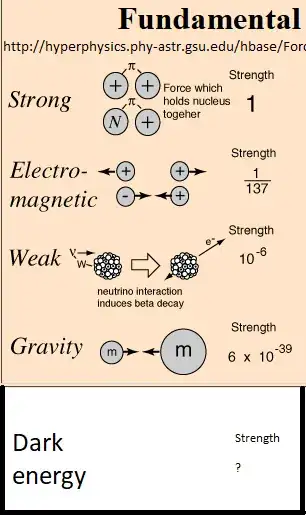In the table of "fundamental forces" emphasis should be given to the word "fundamental", not "forces". The table is relevant to models that use quantum field theory and more specifically the Feynman diagram method for computing the crossections and decays of elementary particles, to start with for the three first forces, and the last is an extrapolation to an effective field theory for gravitation.
In the Feynman diagram model, the expression of the word force is in the $dp/dt$ carried by the virtual particles at the vertex of interaction. So at the particle level there are many forces. At the particle level the term "fundamental" is used for the forces resulting from the gauge boson exchanged in the theory of $SU(3)xSU(1)xU(1)$ of the standard model of particle physics.

The fourth column in the table has the gauge bosons . Before symmetry breaking there are three "fundamental forces". The fourth fundamental force in the link you give, gravity , is a hypothetical unified model, a theory of everything. At the moment there are only effective quantum theories for gravity, but it is in these models that gravity occupies the position it does, as a fundamental force.
Is there a way to put dark energy into this table and somehow match its strength compared to the other forces?
As dark energy is a complicated phenomenon depending on cosmological observations of gravitational interactions, at the moment, it is a subset of the possible $dp/dt$ in the existing models. A model which would use dark energy to define a new fundamental force is needed in order for it to have its own "gauge bosons" and thus occupy a place in the particle table in the future. At present the answer is "no".

